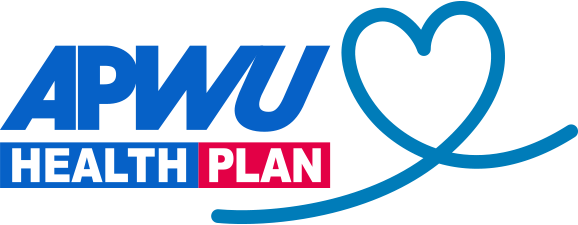Back pain is one of the most common medical problems in the U.S. In fact, 80 percent of Americans will experience back pain at some point in life, and it affects men and women equally. Sometimes back pain is sharp and intense, caused by heavy lifting or an accident, and heals in a short period of time. Other times back pain is a dull, constant ache that prevents people from going to work and spending time with family and friends. Fortunately, there are ways to find relief from back pain.
Short-term vs. long-term back pain
There are different types of back pain. Short-term back pain is often caused by excessive lifting, falling down, repetitive activities, or making a sudden, awkward movement. In these cases, the pain usually goes away on its own, though it may take some time.
Medical conditions can also cause chronic, long-term back pain. Over time, the bones and joints in the back can change. The discs in the spine that act as cushions between the bones may wear out and become fragmented. The soft material inside a disk may bulge or rupture and press on a nerve, causing pain.
Other medical conditions can also cause back pain:
Arthritis, the swelling and tenderness of your joints, can affect your back. In some cases, arthritis can lead to a narrowing of the space around the spinal cord, a condition called spinal stenosis.
Scoliosis, a curvature of the spine, can lead to back pain.
Osteoporosis, a condition where your bones become porous and brittle, can cause compression fractures in your vertebrae, leading to back pain.
The risk factors for back pain
Several factors can put you at risk of developing back pain:
- Age. Back pain is more common as you get older.
- Lack of exercise. Weak muscles in your back and abdomen may lead to back pain.
- Being overweight. Excess body weight can put extra stress on your back.
- Improper lifting. Using your back instead of your legs can lead to back pain.
Tips for preventing back pain
Healthy eating, physical activity, ergonomic workspaces, and good body mechanics can help you strengthen your spine and avoid back pain. Here are some tips to help you keep your back healthy and strong:
- Choose a good chair. Look for low back support, armrests, and a swivel base. Keep your knees at a 90-degree angle and your feet flat on the floor. If your back still hurts, place a small pillow or rolled towel in the small of your back to help maintain its normal curve.
- Sit up straight. Slouching can put stress on your back muscles.
- Get up and get moving. Try not to sit for more than an hour at a time.
- Change positions. If you’re on your feet all day, try to change positions from time to time and transfer your body weight from one side to the other.
- Exercise. Low-impact activities, like walking and swimming, can help build strong back muscles and prevent injury. A good exercise program includes aerobic activity, strength training, and flexibility exercises, but talk with your doctor about which activities are right for you. Maintaining an exercise routine over time can help prevent the pain from returning.
- Build muscle strength and flexibility. Exercises that strengthen your core can help condition your back muscles. Flexibility in your hips and upper legs can also help improve how your back feels. Your doctor or physical therapist can tell you which exercises are right for you.
- Use proper lifting techniques. If you have to lift or move something heavy, let your legs do the work. Keep your back straight, and bend your knees. If the object is too heavy, ask for help.
- Maintain a healthy weight. With more people living sedentary lifestyles, back pain has become more common. Excess weight can strain your back muscles, so if you’re overweight, take steps to trim down.
Home remedies to treat back pain
Immediately following an injury, people often wonder whether it’s best to use cold or heat therapies to treat back pain.
Experts recommend using an ice pack or cold compress to numb the area and reduce swelling. About 48 hours after the onset of back pain, apply heating pads or a hot-water bottle to your back. The warmth will soothe and relax aching muscles and increase blood flow, which can help you heal. But heat is only helpful for about a week.
You may want to lie down, but experts recommend limiting bed rest. Keep moving to prevent your muscles from becoming stiff.
Depending on the type of back pain you have, your doctor may recommend that you take an over-the-counter pain reliever.
Short-term back pain often gets better with a few weeks of home treatment. However, back pain is complex, and everyone is different. Surgery is rarely needed to treat back pain.
Physical therapy for long-term back pain
If you suffer from chronic, long-term back pain, consider seeing a physical therapist. Physical therapists use a wide range of methods to reduce back pain, including heat, ultrasound, electrical stimulation, and muscle-release techniques.
Physical therapy for chronic back pain can help you:
- Retrain your posture
- Test your limits of pain tolerance
- Learn stretching exercises
- Increase your flexibility
- Engage in aerobic exercises
- Strengthen your core
- Help prevent pain from returning
When to see a doctor for back pain
In rare cases, back pain can be a sign of a serious medical problem. Seek immediate care if your back pain:
- Causes new bowel or bladder problems
- Is accompanied by a fever
- Follows a fall, blow to your back, or other serious injury
- Spreads down one or both legs
- Causes weakness, numbness, or tingling in one or both legs
- Is accompanied by unexplained weight loss
When you have back pain, it’s important to listen to your body. Try to avoid activities that worsen your pain, and take breaks as needed. If home treatments don’t work after several weeks, your doctor might suggest other therapies.


